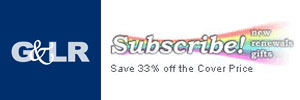Ten years into its alternative investments program, the New Jersey Division of Investments had only positive things to report about the strategy at its annual state investment council meeting Wednesday.
The $26.7 billion alternatives portfolio has outperformed both the broader pension fund and global public markets on absolute and risk-adjusted bases over the last five years, according to the review.
“There’s been a lot of discussion about, ‘Are alternatives worth it?’” said Director Christopher McDonough. “This says yes.”
The $79 billion pension fund faced scrutiny for its alternatives program last year following the revelation that the asset owner paid over $600 million in fees to external managers in 2012, 2013, and 2014.
Council chair Tom Byrne defended the fees at a senate oversight hearing in June, arguing that returns justified the costs.
“Would you pay $334 to make an additional $1,800?” he asked.
At Wednesday’s meeting, McDonough pointed to private equity and real estate as the pension fund’s best performing asset classes over the last decade. In 2015—a “challenging year”—he described the two asset classes as the few bright spots in the portfolio.
“To get 16.5% from private equity and 15% from real estate when they combined represent about 12% of our assets had a really meaningful impact on the performance for the year,” he said.
Kristen Doyle, head of pension funds at Aon Hewitt Investment Consulting, also gave a glowing review of the pension’s alternatives program, citing alpha generation, downside protection, and volatility reduction as key benefits.
“These managers, we believe, have some of the best skill in the industry,” Doyle said. “They have unconstrained investment mandates so they implement the best ideas. They are nimble and opportunistic and take advantage of short-term opportunities.”
According to Aon Hewitt’s analysis, a diversified portfolio including alternatives outperformed a 70/30 equity/bonds allocation for all rolling 10-year periods from 2003 to 2015. The portfolio also held up better in strong drawdowns, such as 2008.
“Having more diversification and having allocations to alternatives that provide strong risk-adjusted returns and some kind of downside protection and lower correlation to public markets actually does pay off,” Doyle said.
While Doyle noted that the outperformance Aon Hewitt reported was net of fees, McDonough said the costs of New Jersey’s alternatives program were still a concern, and one the investment division would continue to evaluate going forward.
Specifically, he said, the division would look at renegotiating existing fee arrangements, and explore lower cost strategies such as alternative beta and liquid alternatives.
His team has already negotiated preferential terms for the “majority” of its 31 new or add-on alternatives commitments in 2015, McDonough said, resulting in “meaningful” fee savings.
“We recognize the importance of minimizing fees and costs and always working hard to push for returns,” he concluded.

 Source: EY & Private Equity International’s
Source: EY & Private Equity International’s 